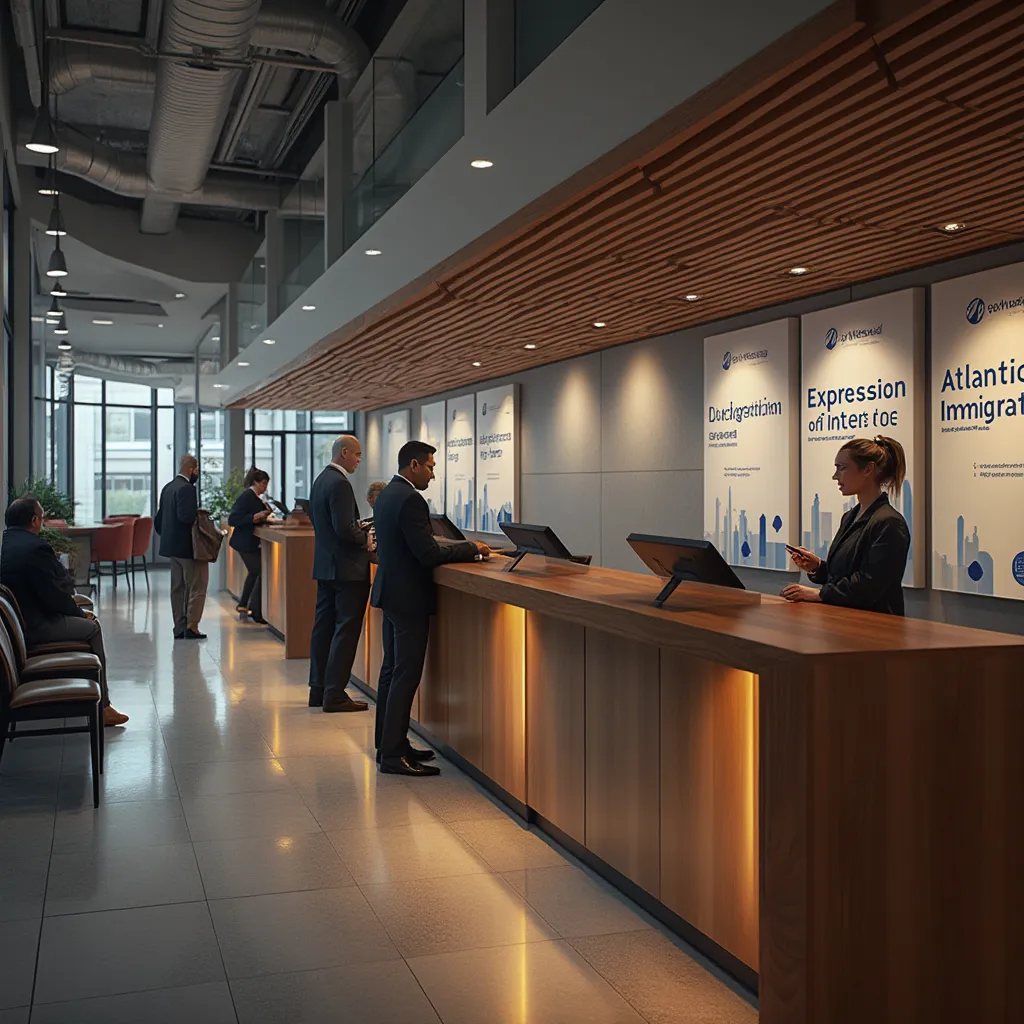Table of Contents
Provincial Immigration Systems Evolve to Meet Labor Demands
In April 2025, Newfoundland and Labrador, along with New Brunswick, introduced significant updates to their immigration systems. These changes reflect a growing trend among Canadian provinces to align immigration strategies with pressing labor market needs.
Both provinces have adopted more targeted approaches to manage limited immigration allocations effectively. Newfoundland and Labrador transitioned to an Expression of Interest (EOI) system, while New Brunswick refined its Provincial Nominee Program (PNP) pathways and conducted multiple draws.

Newfoundland and Labrador’s Shift to EOI
Newfoundland and Labrador replaced its first-come, first-served application process with a two-step EOI system. This system now governs both the Newfoundland and Labrador Provincial Nominee Program (NLPNP) and the Atlantic Immigration Program (AIP).
The EOI system prioritizes candidates who can address critical labor shortages, particularly in healthcare and education. Candidates submit an EOI form detailing their occupation, education, language proficiency, and intent to reside in the province. Selected candidates then receive invitations to apply for either the NLPNP or AIP.
This new model ensures immigration spaces align with economic priorities. It also distributes applications throughout the year, rather than relying on submission order. Processing times may extend to three months or more under this system.
New Brunswick’s Updated Immigration Pathways
New Brunswick has also made strategic updates to its immigration programs. The province reopened its PNP pathways in February 2025 and conducted its first draws in March and April, issuing 498 Invitations to Apply (ITAs).
These draws targeted key sectors such as healthcare, education, social services, and construction. New Brunswick also expanded its Skilled Worker Stream into three pathways: New Brunswick Experience, New Brunswick Graduates, and New Brunswick Priority Occupations (temporarily paused).
The province introduced two new pathways under its Express Entry Stream: Employment in New Brunswick and New Brunswick Interests. However, certain occupations, such as food services and administrative roles, were excluded to focus on high-demand fields.
New Brunswick’s total immigration allocation for 2025 is 2,750 spaces, with 1,500 for the NBPNP and 1,250 for the AIP. The province now emphasizes an EOI system for assessing candidates’ skills, job offers, and permanent settlement intentions.
These updates reflect a broader shift toward streamlining immigration processes and prioritizing candidates in key sectors. Both provinces aim to meet workforce demands while adapting to federal allocation limits.
Newfoundland and Labrador: Key Features and Implications
The EOI system introduced by Newfoundland and Labrador includes several key features designed to streamline the immigration process. Candidates are required to submit an EOI form that details their occupation, education, language proficiency, and intent to reside in the province. This form serves as the first step in the two-step process. Once submitted, candidates may receive an invitation to apply for either the NLPNP or AIP based on labor market priorities.
One of the critical aspects of this system is its impact on existing applications. Those submitted before February 19, 2025, remain valid, though some candidates may bypass the EOI stage. Others will have their applications reviewed under the new system, ensuring a smooth transition without disrupting ongoing processes.
In terms of policy shifts, Newfoundland and Labrador secured 2,525 immigration spaces for 2025, marking an increase of 1,000 spots compared to previous years. Despite this expansion, demand still exceeds available spaces, prompting the province to continue advocating for more allocations to meet its labor market needs.
For employers, the resumption of Job Vacancy Assessments and AIP Designations on March 7, 2025, offers new opportunities to support foreign workers. This change allows employers to address critical labor shortages more effectively, particularly in high-demand sectors like healthcare and education.
New Brunswick: Strategic Program Updates and Future Outlook
New Brunswick’s immigration strategy for 2025 includes several strategic updates aimed at refining its pathways. The province expanded its Skilled Worker Stream into three distinct pathways: New Brunswick Experience, New Brunswick Graduates, and New Brunswick Priority Occupations. While the third pathway is currently paused, the first two provide clear avenues for candidates with relevant work experience or educational backgrounds in the province.
Under its Express Entry Stream, New Brunswick introduced two new pathways: Employment in New Brunswick and New Brunswick Interests. These pathways are designed to attract candidates with specific skills and job offers in high-demand sectors. However, certain occupations, such as food services, retail, and administrative roles, were excluded from eligibility to focus on critical labor market needs.
The Atlantic Immigration Program (AIP) in New Brunswick also underwent adjustments. Starting February 20, 2025, the province ceased endorsements for occupations like accounting, food services, and customer support. This shift reflects a broader strategy to prioritize endorsements for candidates in sectors facing acute labor shortages.
In terms of allocation, New Brunswick has a total of 2,750 immigration spaces for 2025, with 1,500 allocated to the NBPNP and 1,250 to the AIP. The province now emphasizes an EOI system for assessing candidates, focusing on their skills, job offers, and permanent settlement intentions. This approach ensures that immigration aligns closely with provincial economic priorities.
Looking ahead, New Brunswick’s immigration updates aim to streamline processes and prioritize candidates in key sectors. These changes are part of a broader effort to meet workforce demands while adapting to reduced federal allocations. By focusing on high-demand fields and refining its pathways, the province seeks to create a more sustainable and efficient immigration system.

Conclusion
The evolution of provincial immigration systems in Newfoundland and Labrador and New Brunswick reflects a strategic shift toward aligning immigration policies with pressing labor market demands. Both provinces have adopted more targeted approaches, such as the EOI system in Newfoundland and Labrador and the refined PNP pathways in New Brunswick, to manage their immigration allocations effectively.
These updates emphasize the importance of addressing critical labor shortages in key sectors like healthcare, education, and construction. By prioritizing candidates with skills and job offers in high-demand fields, both provinces aim to create a more sustainable and efficient immigration system that supports economic growth while adapting to federal allocation limits.
As these provinces continue to refine their strategies, the focus remains on streamlining processes, ensuring alignment with economic priorities, and creating opportunities for both candidates and employers. These changes underscore the dynamic nature of Canada’s immigration landscape and the proactive measures being taken to meet workforce demands.
Frequently Asked Questions
What is the Expression of Interest (EOI) system in Newfoundland and Labrador?
The EOI system is a two-step process introduced by Newfoundland and Labrador to manage immigration applications. Candidates submit an EOI form detailing their occupation, education, language proficiency, and intent to reside in the province. Based on labor market needs, selected candidates receive invitations to apply for the NLPNP or AIP.
How have New Brunswick’s Provincial Nominee Program (PNP) pathways been updated?
New Brunswick expanded its Skilled Worker Stream into three pathways: New Brunswick Experience, New Brunswick Graduates, and New Brunswick Priority Occupations. It also introduced two new pathways under its Express Entry Stream: Employment in New Brunswick and New Brunswick Interests, focusing on high-demand sectors while excluding certain low-priority occupations.
What is the impact of the new EOI system on existing applications in Newfoundland and Labrador?
Applications submitted before February 19, 2025, remain valid, though some candidates may bypass the EOI stage. Others will be reviewed under the new system, ensuring a smooth transition without disrupting ongoing processes.
How many immigration spaces are allocated to New Brunswick for 2025?
New Brunswick has a total of 2,750 immigration spaces for 2025, with 1,500 allocated to the NBPNP and 1,250 to the AIP.
What changes were made to the Atlantic Immigration Program (AIP) in New Brunswick?
New Brunswick ceased endorsements for certain occupations like accounting, food services, and customer support under the AIP, focusing instead on sectors with acute labor shortages.
Note
Sohi Law Group is a British Columbia-based law firm. Immigration is federally regulated in Canada, which allows our lawyers to assist clients applying to programs across provinces, including Newfoundland and Labrador and New Brunswick, where permitted by law.
This blog post is provided for informational purposes only and does not constitute legal advice. For guidance on your specific circumstances, please contact a qualified immigration lawyer.





No comment